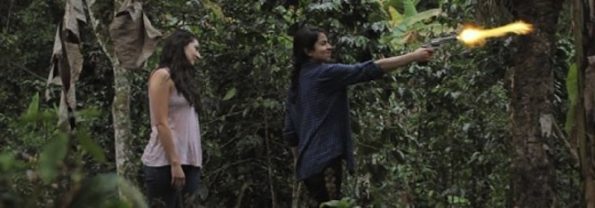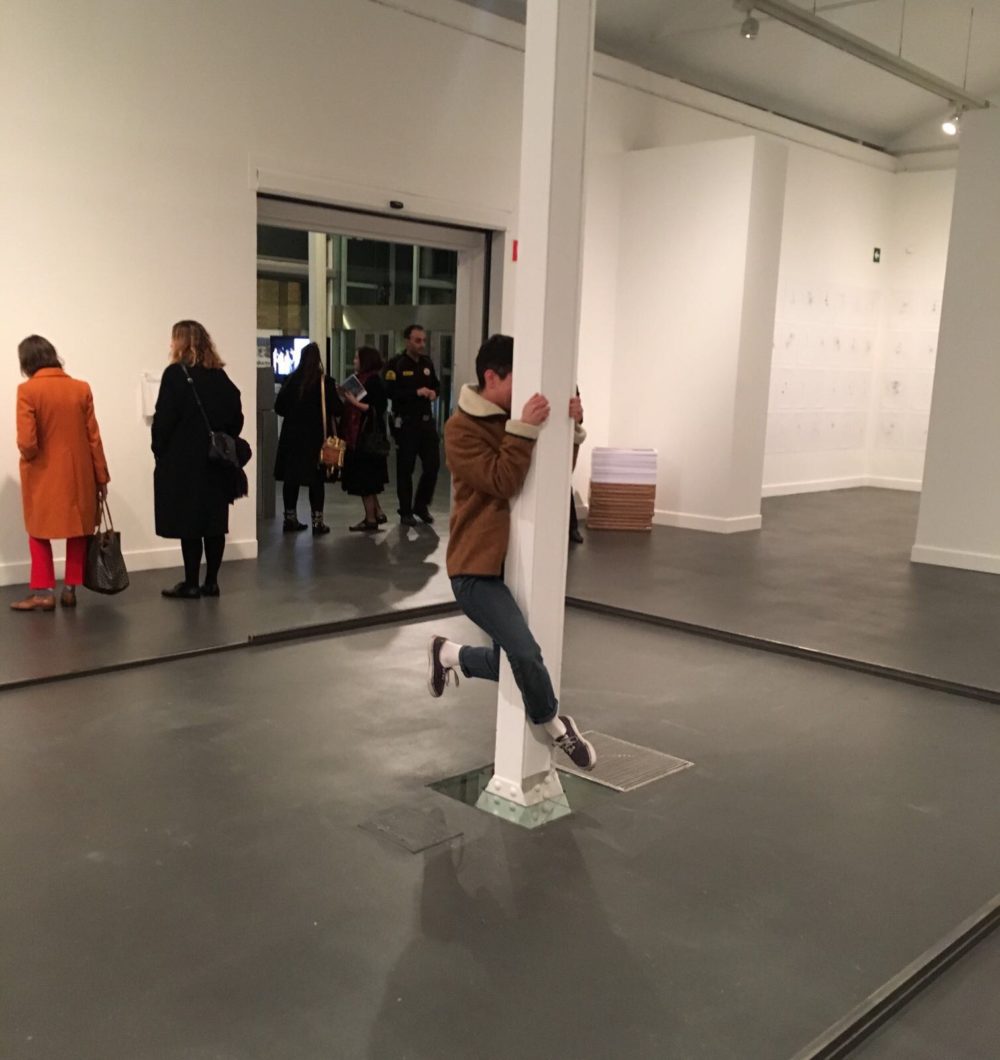Search
To search for an exact match, type the word or phrase you want in quotation marks.
A*DESK has been offering since 2002 contents about criticism and contemporary art. A*DESK has become consolidated thanks to all those who have believed in the project, all those who have followed us, debating, participating and collaborating. Many people have collaborated with A*DESK, and continue to do so. Their efforts, knowledge and belief in the project are what make it grow internationally. At A*DESK we have also generated work for over one hundred professionals in culture, from small collaborations with reviews and classes, to more prolonged and intense collaborations.
At A*DESK we believe in the need for free and universal access to culture and knowledge. We want to carry on being independent, remaining open to more ideas and opinions. If you believe in A*DESK, we need your backing to be able to continue. You can now participate in the project by supporting it. You can choose how much you want to contribute to the project.
You can decide how much you want to bring to the project.

Going around galleries is something of a habit. Particularly when visiting cities where one doesn’t practice geographic permanence. Bearing in mind how customary it is, there’s maybe a degree of novelty in interchanging the option of the planned, known route for the unknown route; solitary artistic flaneurism for the collective experience of the shared excursion; a solemnity of reception for the rupture of the circumscribed movement. Something like this is what happened last 12 April with the presentation of Jugada a 3 bandas in Barcelona, an initiative of Hablar en Arte aimed at connecting galleries, artists and curators. And also the public, though this term largely pertains to some of the previous categories.
The itinerary promoted by Ja3b goes well beyond its day of presentation (that supposed a continuum of openings throughout the evening, in a manner not apt for the phlegmatic) and constructs for a month and a half, a familiar map including in the Barcelona version; Galería Alegría, ADN Galería, Projecte SD, Balaguer, etHALL, ángels barcelona and Nogueras Blanchard. Given that the totality is only assumable in theory and that in practice attention is directed by a subjective demarcation based on personal preferences, of all the exhibitions in Ja3b what stands out, admitting the partiality of taste, is Un millón de amigos by the Colombian artist Iván Argote at ADN Galería.
If there is one feeling that runs through a large part of this exhibition (or to be more correct the spectator) it is tenderness. This enables one to talk about art in relation to the emotional subjectivity of the receiver, something that is quite unusual and moreover enjoys a bad reputation within an intellectualism based on the objectification of the subjective. Though a large part of Iván Argote’s work triggers such an intimate, individual and bidirectional feeling as tenderness, it does so without stumbling into the sentimental or affected. Other terms could be used to refer to Argote’s artistic production. For example, low frequency political action, analysis through apparently spontaneous actions of an encounter with the “other”, humour as a strategy when confronting the regimented solemnity of serious things, the effectiveness of the simple, the transcendence of the ephemeral, the everyday as a multiverse to be explored and weighed up. Approximations that if more concrete in their generalisation, still don’t avoid the dominant pathos (tenderness) that converts the work of Argote into the resolution and setting in motion of those occurrences that we cast aside out of a lack of determination and an excess of codification in our relation with the rest, particularly if they are strangers or (harder still) half-strangers.
Un millón de amigos begins as a popular party with a phrase of Borges as a sort of laconic manifesto. ¿Quién no juzgó alguna vez a sus ancestros, a la prehistoria de su carne y sangre? (Who hasn’t at some point judged their ancestors, the prehistory of their flesh and blood?) is an installation where the text translates into various threads of light-bulbs arranged into Morse code on the ceiling. Dándole peso a los besos (Giving weight to kisses) is based on the presence of one of the most fugitive events that exist, a kiss, thanks to a rock covered in the traces of this repeated event. Extractos(Extracts) transports to the gallery space the reconstructed fragment of an urban wall that, beyond its textual vindication, inevitably translates the contradiction of the artistic dislocation. In Caricia (Caress) the artist rehearses an intervention, caressing a couple of lovers in a Parisian park with his shadow. Un año al día (A year a day) is a series of Polaroid photographs, the fruit of a project where Iván Argote takes the role of the crafter of distant birthdays, vindicating in the celebration this memento mori innate to the biographical temporality of being human. In Make happy, make me sad he intervenes on an old 5000 peseta note, provoking an emotional ambiguity in the face of the king of Spain. The poetical-political manoeuvre is repeated in Turistas (Tourists), dressing with a poncho the sculptures of Isabella the Catholic and Christopher Colon found in a square of the Colombian capital. In Activísimo!(Activism!)he takes to the street once again, this time reconstructing with subtitled slides the experience of a family history, reactivating the idea of a protest workshop that his father had coordinated decades earlier. The fusion between history and personal biography appears once again in Historia de la Humanidad (History of Humanity), an 8mm film that, at the same time as reviving the format of family videos, resuscitates allegorically great moments of humanity. With Geometría (Geometry) belonging is combined with origin when two girls in the jungle use as a compass the shots from a weapon to indicate, with indeterminate answers, their place of origin. The exhibition, which this synopsis doesn’t do justice to, ends with La estrategia (The strategy), a revival of the past through the recompilation of anecdotes of some militants in Bogota from the seventies in which various people together put into practice the aim of living a pipe-dream: reliving a distant –but also their own- past from the present.
Aside from all the differences to be found in the pieces, Un millón de amigos–and by extension the work of Iván Argote- reminds us that maybe art functions –above all for those who produce or actively participate in it- as a legitimate excuse to relate us to a world where exception is patrimony of only a few.

artwriter_curator_esnorquelmaker_chocolateresearcher_technodancer__bikeenthusiast_coffeeaddicted_
"A desk is a dangerous place from which to watch the world" (John Le Carré)